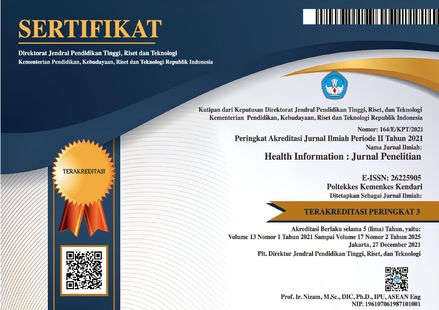Patofisiologi Otitis Media Efusi (OME) Pada Pasien Dengan Refluks Laringofaringeal (LPR)
Keywords:
pathophysiology, otitis media with effusion, OME, laryngopharyngeal reflux, LPRAbstract
Otitis media with effusion (OME) is a condition in which there is a non-purulent effusion in the middle ear without perforation of the tympanic membrane. Over the last few decades, gastroesophageal reflux, which can then develop into laryngopharyngeal reflux, has been proposed as one of the important etiologic factors for OME. A prevalence study in 2019 stated that the incidence of OME was found to be 4.5 times more in the group of patients with LPR than in the group without a history of LPR. This pathophysiological mechanism has often been questioned in previous studies because various hypotheses can explain the effect of LPR on the pathogenesis of OME. Objective: The author wants to provide a new, more accurate reference regarding the pathophysiology of otitis media with effusion in cases of laryngopharyngeal reflux based on previous references. Methods: A literature search was performed using databases such as PubMed, Cochrane Library, and Science Direct with the keywords "pathophysiology", "otitis media with effusion", "OME", "laryngopharyngeal reflux" and "LPR". The inclusion criteria in this study were all a study discussing the definition, etiology, epidemiology, and pathophysiological mechanisms of OME in patients with LPR. Literature that met the inclusion criteria was analyzed systematically and presented in appropriate articles, tables, and diagrams to facilitate an understanding of the pathophysiology of otitis media with effusion in cases of laryngopharyngeal reflux. Results: The mechanism of LPR in developing OME can be divided into several suggestive possibilities: a) Eustachian tube dysfunction due to LPR; b) stimulation of inflammation in the middle ear by H. pylori; and c) proteolytic activity of pepsin in the middle ear. gastric can reach the Eustachian tube and cause direct tubal obstruction a tau causes inflammation, adhesions, and collapse of the duct thereby facilitating microorganisms to develop OME. On the other hand, reflux content containing H. pylori bacteria and pepsin also plays a role in triggering the inflammatory response that causes OME. Conclusion: The mechanism that most likely explains the pathogenesis of otitis media with effusion (OME) in cases of laryngopharyngeal reflux (LPR) is divided into three main pathophysiological processes as previously described. Further discussion regarding efforts to eradicate H. pylori and lifestyle modifications that are preventive for LPR needs to be done.
Downloads
Published
How to Cite
Issue
Section
Citation Check
License
Copyright (c) 2023 Aurora Rahyu Pasya, Tri Yunita Alica, Chanelia Dirgatni Liow, Alviin Rinaldo, Alviin Rinaldo, Yonatan Adinata (Author)

This work is licensed under a Creative Commons Attribution-ShareAlike 4.0 International License.
Authors retain copyright and grant the journal right of first publication with the work simultaneously licensed under a Creative Commons Attribution-ShareAlike 4.0 International License that allows others to share the work with an acknowledgment of the works authorship and initial publication in this journal and able to enter into separate, additional contractual arrangements for the non-exclusive distribution of the journals published version of the work (e.g., post it to an institutional repository or publish it in a book).











